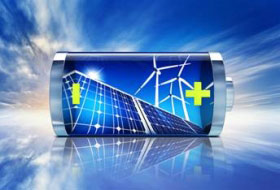By Brian Buckley | Wed, December 7, 16
Rhode Island has long been a leader in the field of energy efficiency policies, consistently landing in one of the top five positions on ACEEE’s scorecard in recent years. Looking through National Grid’s proposed 2017 Energy Efficiency Program Plan, we’ve pulled out three distinct components that we believe program administrators in other states may look towards in the near future, and summarized them for you below.
Health Benefits and Income Eligible Programs
Rhode Island’s 2017 Energy Efficiency Plan includes a significant increase in cost effectiveness of income eligible programs. In 2016, income-eligible residential energy efficiency programs had a benefit-cost ratio of 1.10 (electric) and 1.47 (natural gas). In the proposed 2017 Plan, those same programs have a benefit-cost ratio of 3.38 (electric) and 2.38 (gas). The driver behind this increases in cost-effectiveness is a recent evaluation that incorporates health and safety benefits associated with hypothermia and hyperthermia (et al.) in the low-income sector (p. 169). Wider adoption of these quantifiable benefits would be an important step towards ensuring continued delivery of income eligible programs in the region, especially as programs face declines in cost-effectiveness due to changing federal lighting standards.
The Delivered Fuels Opportunity
In Rhode Island, more than 35 percent of customers heat with delivered fuels such as oil and propane. These customers are eligible for energy efficiency programs, but historically the lion’s share of funding for thermal measures to serve these customers has come from sources like Regional Greenhouse Gas Initiative (RGGI) or federal grants. There are many reasons for this historical funding trend, but one is that regulators have traditionally been hesitant to use programs to provide savings outside of the energy system from which their funding emanates. However, this is a regulatory paradigm we’re beginning to see change throughout the region.
As jurisdictions adopt emission reduction targets that necessitate cost-effective energy savings across all fuels and systems– including delivered fuels – many program administrators are contemplating an all-fuels efficiency approach or are looking to electrification of the home heating and transportation sectors. States like Vermont and New York have already contemplated such a framework. In New York’s case, the Public Service Commission found their authority to do so under the state’s clean energy plan, rather than legislatively.
The proposed 2017 Plan notes that National Grid “pledges to continue to work with interested parties to explore and develop other options to achieve a long-term solution to support and expand delivered fuels weatherization services. These may include revision and submission of legislation to provide a stable source of funding” (p. 24). The potential to embrace delivered fuels efficiency or electrification would follow with the recommendations of the State Energy Plan (p. 71) and the Systems Integration Rhode Island initiative (p. 54), and might encourage other states to adopt similar strategies.
Battery Storage and Demand Response Pilots
 Energy efficiency programs and technologies exist in a rapidly changing landscape. Programs often find the greatest savings when regulators grant the flexibility to innovate by piloting demonstrations projects. In the proposed 2016 Plan, National Grid has several such pilot projects, including:
Energy efficiency programs and technologies exist in a rapidly changing landscape. Programs often find the greatest savings when regulators grant the flexibility to innovate by piloting demonstrations projects. In the proposed 2016 Plan, National Grid has several such pilot projects, including:
- 150 communicating residential water heater controls that are demand response enabled, but can also learn an occupant’s behavior patterns and save on heating costs during hours of work or sleep
- A “modest” number of residential battery storage systems that participate in demand response and load shifting
- Advanced lighting controls in 100 residences
- Continuing a residential Wi-Fi thermostat pilot that began in 2016
- Power over Ethernet (PoE) lighting systems where DC power and data are delivered to LED fixtures via ethernet cable in new construction and major renovation applications
- A five MW Commercial Demand Response program
- Demonstrating the savings available from water-resistant pump coatings at water and wastewater treatment plants
- A lighting-as-a-service business model in the commercial sector where the company leases equipment to a customer through a turnkey solution where the customer contributes no up-front capital
There are certainly important aspects of this plan which didn’t make it into the “in a nutshell” version presented here — such as the bill impact analysis showing that even non participants saw lower bills thanks to the program (p. 215-221) — but hopefully this summary helps other neighboring states in the region better understand where their programs are heading in the near future.
